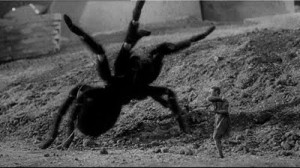One author I have not read enough of is Richard Matheson. The guy’s brilliant, and has written so much great stuff, my guess is you’ve experienced his imagination at some point in your life. And, unless you’re a fan, you’ve likely not heard of him.

Besides THE SHRINKING MAN (retitled as The INCREDIBLE Shrinking Man after the movie came out in 1957), Matheson’s big novels were I AM LEGEND (made into three different movies – The Last Man on Earth, with Vincent Price, The Omega Man, with Charlton Heston, and I Am Legend, with Will Smith), WHAT DREAMS MAY COME (made into a movie with Robin Williams), DUEL, which was Steven Spielberg’s first movie, starring Dennis Weaver and a host of fantastic scripts for The Twilight Zone, Star Trek and a host of others.
So, he’s definitely got a pedigree.
When I read I AM LEGEND a few months back, I realized how much more depth there was to the novel than ever came through in any of the screen adaptations. None of them have done the novel justice. So, having absolutely loved the screen adaptation of Scott Carey’s plight as he shrunk smaller and smaller, I really looked forward to getting to the novel.
I wasn’t disappointed. Yes, the book is 55 years old now, having been published in 1956, so stylistically, it’s a touch dated. But Matheson’s strength is story and he delivers in spade. The story starts when the titular character, Scott Carey, is 6/7 of an inch high. Matheson made the math easy, having him shrink 1/7 of an inch each day, so each week added up to a nice, even inch. And this is where he introduces the ticking clock…Scott has six days left. Because when you’re only 1/7 of an inch high, and you shrink 1/7 of an inch each day…

The story of his diminishment is told through flashback, starting when he was six feet tall, and now that he’s less than an inch high, Matheson uses elements of Carey’s universe–the basement of the house where he’s now trapped–to jog memories of Scott at key points. The first time he realizes he’s now exactly eye-to-eye with his wife. When he’s mistaken for a twelve-year-old boy by a pedophile. When he’s shorter than his three-year-old daughter. With each of these, he’s rendered more and more powerless in a world that he previously took mostly for granted. Imagine climbing a multi-story lawn chair over the span of hours and realizing, as you reach the slats on the back, that your back once covered this same area. That you could pick up this chair single-handed. These are the landmines that Matheson skillfully plants through the story.
But the bigger issues, and the strengths of the story are when Matheson examines the inside of Scott’s mind. What does it mean to be a man? A husband? A father? When Scott’s barely half his wife’s height, and her beauty haunts him, the sexual yearning that he still experiences even as his wife begins looking at him more as a child, kissing the top of his head, protecting him…these are the scenes with the most power.
You begin to experience the dark side of Scott when the two most fundamental human desires–sex and survival–create a desperation that drives him toward a kind of madness. The first is when he becomes obsessed with watching his daughter’s sixteen-year-old babysitter. Matheson builds this up skillfully, leaving Catherine to Scott’s imagination first, where he imagines a beautiful sketch of her. Then he’s confronted with the reality, which, of course, can never live up to what he’s built up in his mind. She’s shorter, fatter, much less attractive, pimpled, and nosy. Yet, still, he becomes obsessed with her. Until he’s caught and the situation is forced to an end.
The second is an arc that runs for almost the entire length of the novel, is the spider that shares the basement with Scott. The spider–something he could have simply stepped on to kill a year before–is the constant threat to his safety and survival in his new world. He has several skirmishes with the beast and, due to his constant reduction in size, the spider is bigger and more powerful each time. He finally takes it on in a climactic battle when he’s around a quarter-inch tall.

There are a couple of things that grated on me. I understand why Matheson had to focus on specific numbers as Scott shrunk, but it began to get a touch tiresome getting all the relative distances and heights as Scott continued to shrink. And also, the physics of what happens to Scott bothered me toward the end. When you’re six feet tall, losing 1/7 of an inch isn’t a lot. But when you’re only 2/7th of an inch tall, it means you’re shrinking by 50% overnight, which didn’t strike me as plausible–which is funny, but tells you how much Matheson sold the overall concept when I’m looking at a small part of it as “not plausible”. But overall, minor quibbles to a great story.
The entire story is to slowly strip Scott of everything it means to be a Man in a Man’s World (remember, this was the 1950s), then to strip away all hope. Then the ending comes…and it’s not what you expect.
And that is, and always has been, Matheson’s final greatest strength as a storyteller.

